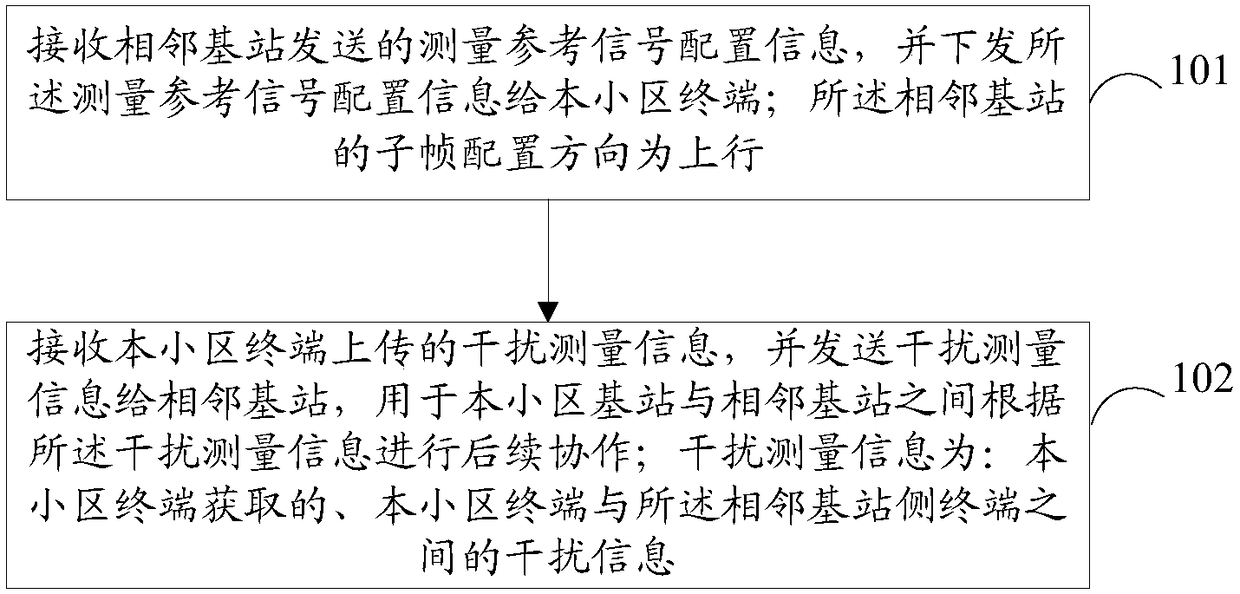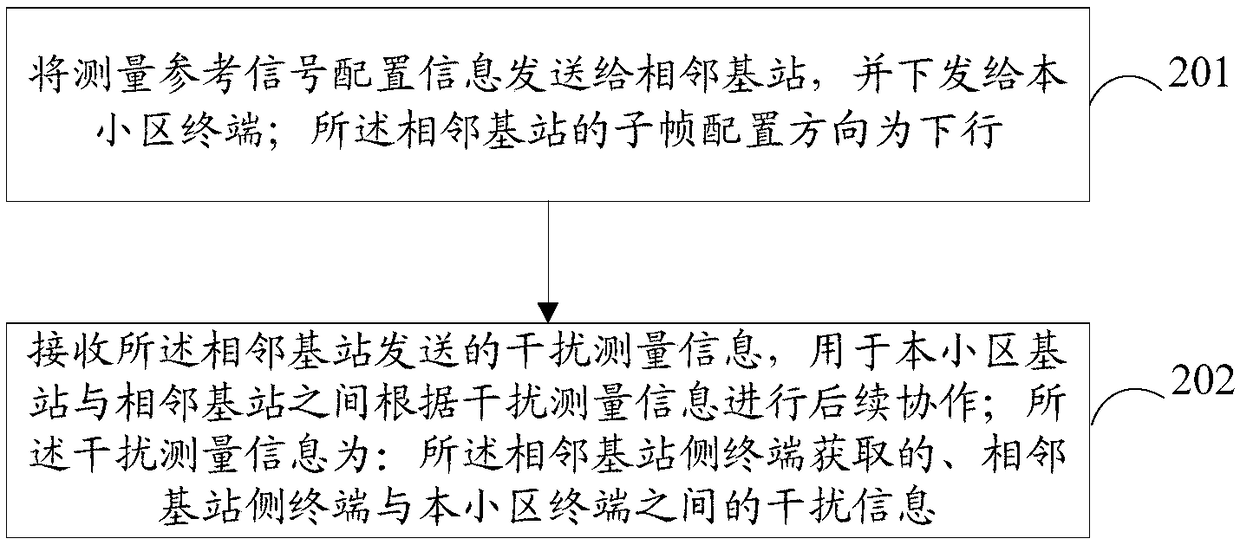Cross link interference measurement method and device and computer readable storage medium
An interference measurement, cross-link technology, applied in wireless communication, electrical components and other directions, can solve problems such as cross-link interference
- Summary
- Abstract
- Description
- Claims
- Application Information
AI Technical Summary
Problems solved by technology
Method used
Image
Examples
Embodiment 1
[0141] In this embodiment, inter-user cross-link interference measurement is performed based on a sounding reference signal (Sounding reference signal, SRS). The specific process is as follows: Figure 9 As shown, specifically:
[0142] Step 901: base station 1 and base station 2 exchange the direction of subframe configuration through the backhaul link (X2 interface);
[0143] Here, the subframe of base station 1 will be configured in the downlink direction, and the subframe of base station 2 will be configured in the uplink direction. In this case, user UE2 served by base station 2 will generate a UE-UE interaction with cell UE1 served by base station 1. cross-link interference.
[0144] Step 902: Base station 2 exchanges the SRS configuration information to the neighboring base station base station 1 through the backhaul link (X2 interface), and at the same time, base station 2 indicates the SRS configuration information to UE2 in the cell;
[0145] Here, the SRS configur...
Embodiment 2
[0153] Such as Figure 10 As shown, the intermediate base station (serving j UEs) will be configured as uplink subframes, and other surrounding base stations will be configured as downlink subframes (the surrounding base stations may not all be configured as downlink subframes). At this time, the base station will configure the surrounding Users in base station 1 (serving m UEs), base station 2 (serving n UEs), and base station 3 (serving k UEs) bring cross-link interference between UEs, that is, the middle uplink base station sends SRS, and the surrounding downlink base stations The serving UE performs interference measurements.
[0154] exist Figure 10 In the scenario shown, the uplink base station and the surrounding base stations first exchange subframe direction information through backhaul / X2, and at the same time, the uplink base station exchanges the SRS configuration information configured for each UE in the cell to the surrounding base stations. The surrounding ba...
Embodiment 3
[0157] Such as Figure 11 As shown, the intermediate base station (serving j UEs) will be configured as a downlink subframe, and other surrounding base stations will be configured as an uplink subframe (the surrounding base stations may not all be configured as an uplink subframe). At this time, the surrounding base stations 1 ( Serving m UEs), base station 2 (serving n UEs) and base station 3 (serving k UEs) will bring cross-link interference between UEs to users served by the intermediate base station. That is, the surrounding uplink base stations send SRS, and the UE served by the intermediate downlink base station performs interference measurement.
[0158]The difference from the second embodiment is that the intermediate downlink base station needs to measure the SRS sent by the surrounding base station 1, base station 2, and base station 3 serving users. The intermediate base station and the surrounding base stations first exchange subframe configuration direction infor...
PUM
 Login to View More
Login to View More Abstract
Description
Claims
Application Information
 Login to View More
Login to View More - R&D
- Intellectual Property
- Life Sciences
- Materials
- Tech Scout
- Unparalleled Data Quality
- Higher Quality Content
- 60% Fewer Hallucinations
Browse by: Latest US Patents, China's latest patents, Technical Efficacy Thesaurus, Application Domain, Technology Topic, Popular Technical Reports.
© 2025 PatSnap. All rights reserved.Legal|Privacy policy|Modern Slavery Act Transparency Statement|Sitemap|About US| Contact US: help@patsnap.com



